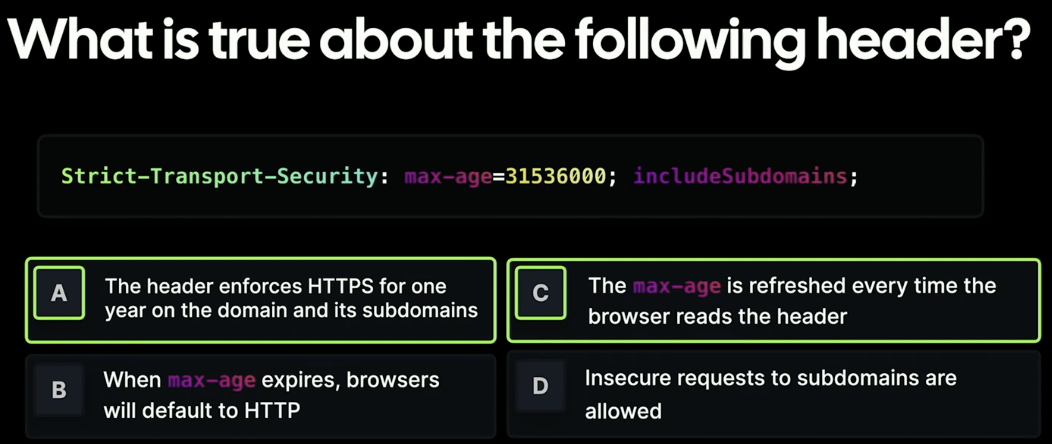
The "Strict-Transport-Security" (STS) header is a security feature implemented by web servers to enforce the use of HTTPS (HTTP Secure) connections for a specified period of time. It is designed to protect websites against various types of attacks, such as man-in-the-middle attacks and protocol downgrade attacks.
The STS header is sent by the server to the client (web browser) as an HTTP response header. When the browser receives this header, it remembers that the website should only be accessed using HTTPS for a specific duration, even if the user types "http://" instead of "https://" in the URL.
The "Strict-Transport-Security" (STS) header is a security feature implemented by web servers to enforce the use of HTTPS (HTTP Secure) connections for a specified period of time. It is designed to protect websites against various types of attacks, such as man-in-the-middle attacks and protocol downgrade attacks.
The STS header is sent by the server to the client (web browser) as an HTTP response header. When the browser receives this header, it remembers that the website should only be accessed using HTTPS for a specific duration, even if the user types "http://" instead of "https://" in the URL.
Let's break down the components of the STS header you mentioned:
-
Strict-Transport-Security: This is the name of the header field. -
max-age=31536000: This directive specifies the duration, in seconds, for which the browser should remember to enforce HTTPS for the website. In the example you provided, the duration is set to one year (31536000 seconds). -
includeSubdomains: This directive is an optional parameter that instructs the browser to apply the same STS policy to all subdomains of the website. With this parameter, any subdomains will also be forced to use HTTPS.
So, when a browser receives the Strict-Transport-Security header with the specified values, it will remember to only connect to that website using HTTPS for the next year. Additionally, if the website has any subdomains, the same policy will be enforced for those subdomains as well.
It's important to note that once the STS policy is set, it cannot be easily overridden or removed by the user or any JavaScript code running on the website. This adds an extra layer of security by ensuring that all subsequent connections to the website are secure.
However, it's essential to configure the STS header with caution, as any misconfiguration or incorrect values could potentially lead to extended periods of downtime or lockout scenarios if HTTPS is not properly configured on the server. It is recommended to thoroughly test and review the implementation before deploying the STS header in a production environment.